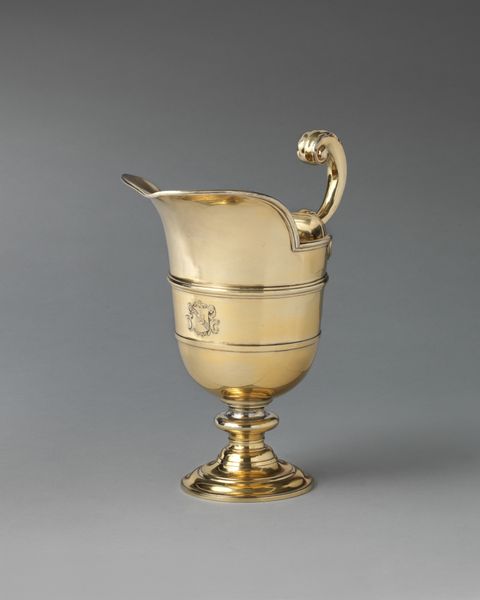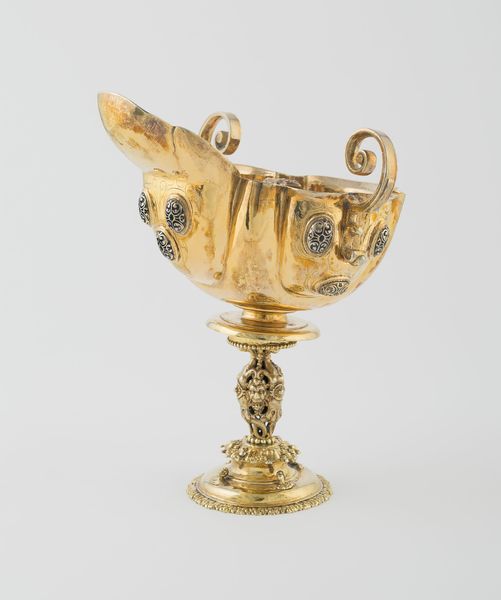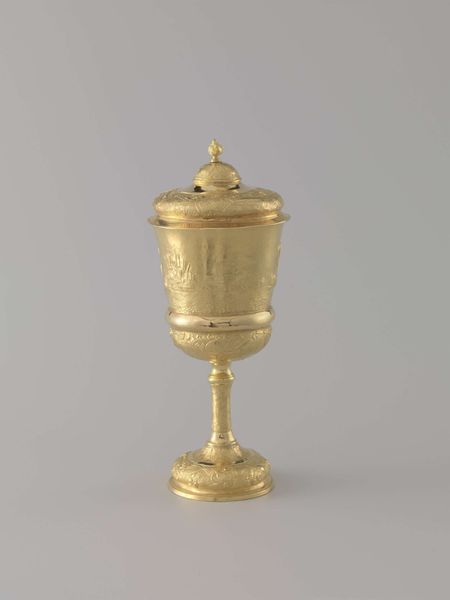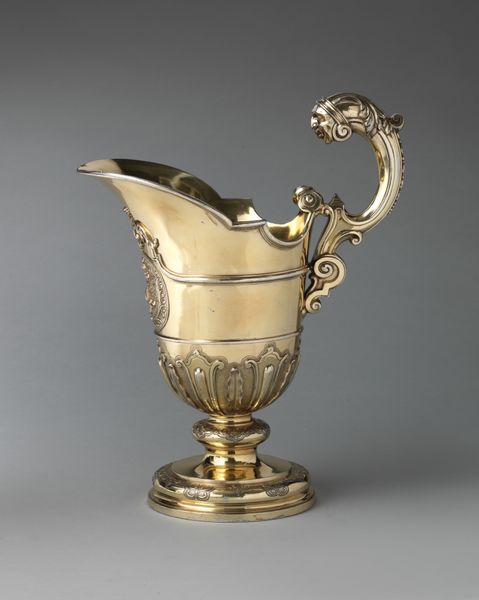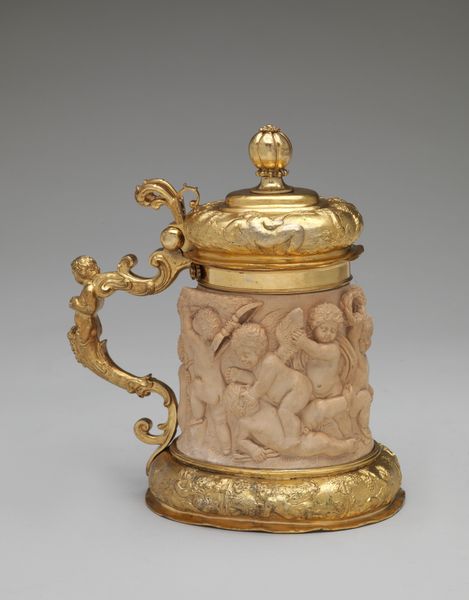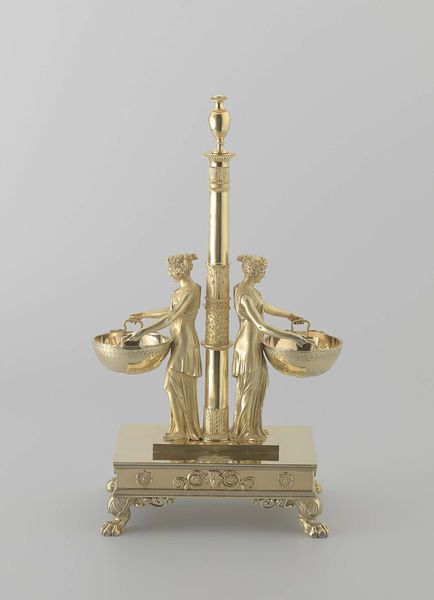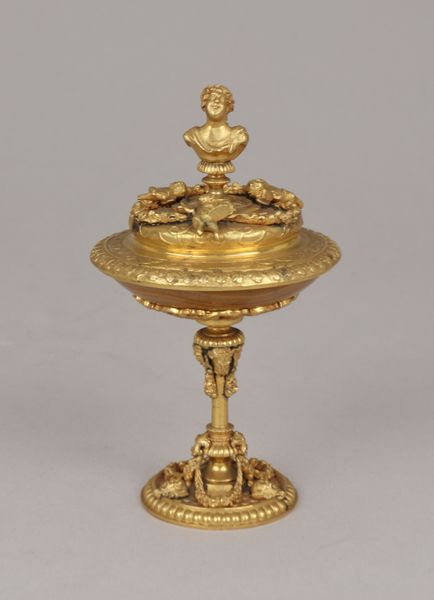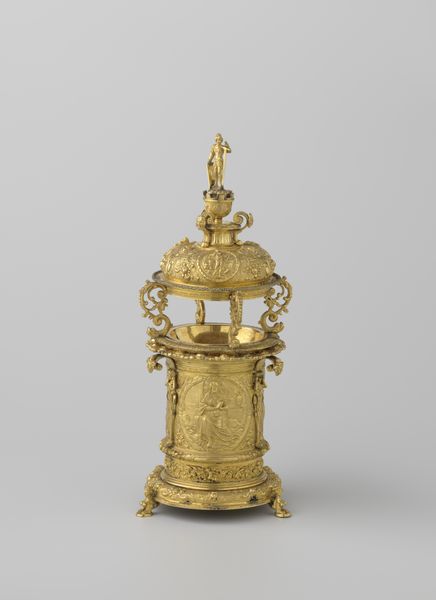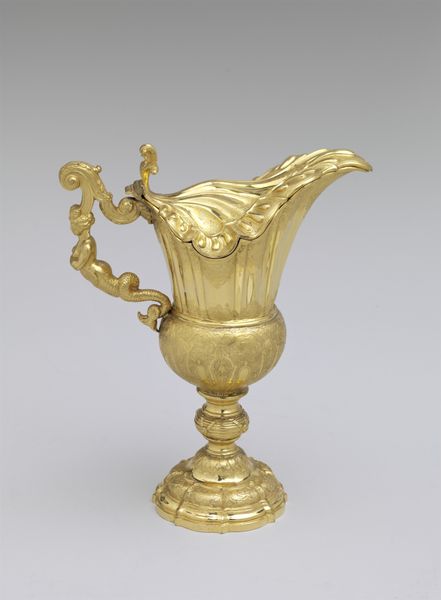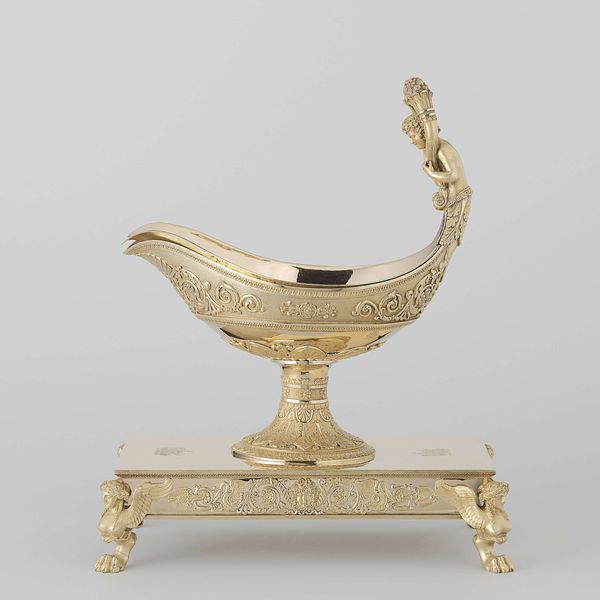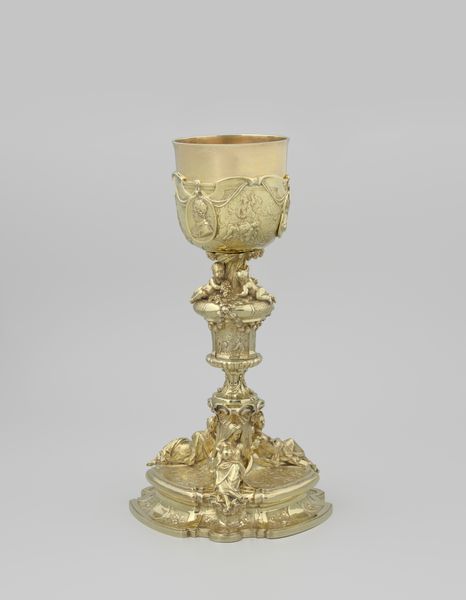
Cloches (dish covers), coolers, soup tureens, sauceboats, salt cellars, pepper and mustard pots c. 1819
0:00
0:00
metal, gold, sculpture
#
neoclacissism
#
metal
#
gold
#
figuration
#
sculpture
Dimensions: height 15.2 cm, width 14.6 cm, depth 10 cm, weight 1260 gr
Copyright: Rijks Museum: Open Domain
Curator: Just look at this piece. Dating back to around 1819, this object is attributed to Jean-Baptiste-Claude Odiot and forms part of a larger service that includes dish covers, coolers, soup tureens, and all manner of exquisite dining essentials. Editor: My goodness! It’s gold, of course, but so…controlled? I mean, it radiates opulence, naturally, but in a distinctly self-aware, poised kind of way. There's this balance between eroticism and authority here. Curator: Precisely. Odiot was a master of Neoclassical style. Observe the figure, a goddess kneeling elegantly alongside what could be a stylized salt cellar, her form echoing classical sculpture. She’s an ideal, a symbol of grace serving practical function. Note how the golden hue ties together pagan classicism and contemporary opulence, almost unifying the distant past and immediate present. Editor: It makes me think of power…and submission, almost. This female figure isn't serving, but attending; she guards the vessel. Like an offering. I suppose you wouldn't want just anyone doling out your salt, would you? Curator: It speaks volumes, doesn't it? The materials, the artistry, the Neoclassical symbolism. It's more than a serving piece; it’s a miniature monument to both status and taste. A salt cellar transformed into an artifact brimming with stories. This piece encapsulates the visual culture that surrounded dining in the high aristocratic circles of the early 19th century. Editor: It’s unsettling. It does spark something strange...like being both repelled by, and attracted to, pure power. If dining utensils could whisper secrets, I suspect these pieces would have some very elaborate, dangerous, stories to tell. Curator: Indeed. This is where history merges with the symbolic imagination. An artwork isn't merely an aesthetic object; it's a vessel filled with cultural memory. It preserves in crystalline form what societies valued most. Editor: That's it, actually: the gleam, like a perfectly-frozen memory. Odiot certainly created something meant to provoke much more than appetite. It truly speaks for itself.
Comments
rijksmuseum about 2 years ago
⋮
A confidante of the Russian empress commissioned this 140-piece service, several items of which are displayed here. Silversmith Odiot, the painter Prud’hon and the architect Cavelier proudly presented the new models at the 1819 French national exhibition of decorative art. Notable are the kneeling angels supporting the soup tureen, which are characteristic of the late Empire style.
Join the conversation
Join millions of artists and users on Artera today and experience the ultimate creative platform.

